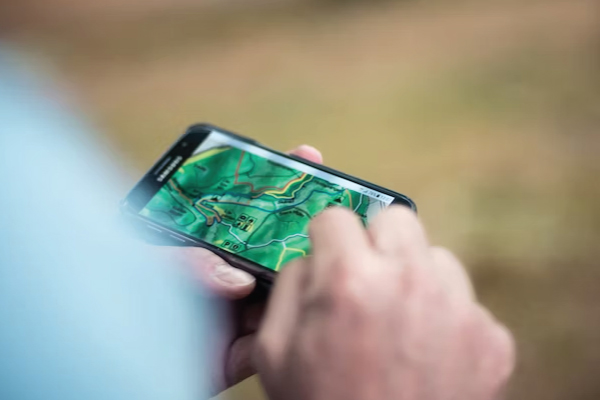A Critical Event Management Company
Navigating Emergencies: The Importance of Emergency GPS in Crisis Response Management
Emergency GPS technology has revolutionized the way crisis response management is carried out. It has helped to enhance situational awareness, improve response times, and save lives during emergencies.
With the advent of new technology trends and best practices, the possibilities for emergency GPS technology are endless.
In this article, we will explore the latest trends and best practices for implementing emergency GPS technology in crisis response management.
 The Role of GPS in Crisis Response Management
The Role of GPS in Crisis Response Management
In today's world, emergencies and disasters are becoming more frequent and unpredictable. In such situations, every second counts, and emergency responders need to act quickly to save lives and minimize damage. To do this, they need accurate and up-to-date information about the situation, including the location of critical assets and personnel.
This is where Global Positioning System (GPS) technology comes into play. GPS is a satellite-based navigation system that provides real-time location information. It was initially developed for military use but is now widely used in civilian applications, including emergency response management.
Emergency GPS refers to the use of GPS technology in emergency response management, enabling first responders and crisis managers to navigate through chaotic situations and make quick, informed decisions. Emergency GPS is a critical component of crisis response management and can make all the difference in saving lives and minimizing damage during an emergency.
The importance of emergency GPS in crisis response management cannot be overstated. During an emergency, communication systems may be disrupted, and traditional navigation tools such as maps may not be sufficient. Emergency GPS can provide real-time location information, allowing responders to locate and coordinate with others, track critical assets, and evacuate civilians efficiently.
The use of emergency GPS in crisis response management has a long history, dating back to the 1980s. Over the years, emergency GPS technology has evolved, becoming more accurate and accessible. Today, emergency GPS is a vital tool for crisis managers and emergency responders, enabling them to respond more effectively and efficiently to emergencies of all kinds.
 Benefits of Emergency GPS for Crisis Response Management
Benefits of Emergency GPS for Crisis Response Management
Emergency GPS technology provides a range of benefits for crisis response management. In this section, we explore some of the key benefits of using emergency GPS technology during emergencies.
Rapid and accurate location identification:
One of the primary benefits of emergency GPS technology is that it provides rapid and accurate location identification. During emergencies, it is critical to quickly locate and respond to the affected area. Emergency GPS enables responders to identify the precise location of an incident, and critical assets, such as hospitals, fire stations, and police stations. This allows responders to quickly deploy resources and provide aid to those in need.
Real-time tracking and monitoring of critical assets:
Emergency GPS technology also enables real-time tracking and monitoring of critical assets, such as emergency vehicles and equipment, providing updates on the location, status, and condition of these assets and enabling responders to make informed decisions about resource deployment.
Coordination of emergency response teams:
Emergency GPS technology can also facilitate the coordination of emergency response teams. During emergencies, multiple response teams may need to work together to respond effectively. Emergency GPS technology enables teams to track and communicate with each other, facilitating coordination and ensuring that resources are deployed efficiently.
Enhanced situational awareness and decision-making:
Finally, emergency GPS technology can enhance situational awareness and decision-making. During emergencies, there is often a high level of chaos and uncertainty. Emergency GPS technology provides responders with real-time information about the situation, including the location and status of critical assets and personnel. This enables responders to make informed decisions about resource deployment and other critical decisions.
Overall, emergency GPS technology provides a range of benefits for crisis response management. It enables rapid and accurate location identification, real-time tracking and monitoring of critical assets, coordination of emergency response teams, and enhanced situational awareness and decision-making. These benefits can make all the difference in saving lives and minimizing damage during emergencies.
 Challenges of Emergency GPS in Crisis Response Management
Challenges of Emergency GPS in Crisis Response Management
While emergency GPS technology provides many benefits for crisis response management, there are also several challenges that need to be addressed. In this section, we explore some of the key challenges of using emergency GPS technology during emergencies.
Technical limitations and vulnerabilities:
One of the primary challenges of emergency GPS technology is its technical limitations and vulnerabilities. GPS signals can be disrupted by environmental factors, such as buildings or weather, and may not be accurate in all situations. Additionally, GPS technology can be vulnerable to cyber-attacks, which can compromise the integrity of the data and impact the response.
Integration with existing communication systems:
Another challenge is the integration of emergency GPS technology with existing communication systems. During emergencies, multiple communication systems may be used, such as radios, phones, and satellite communication. It is important to ensure that emergency GPS technology can seamlessly integrate with these systems to enable effective communication and response.
Privacy and data security concerns:
The use of emergency GPS technology also raises privacy and data security concerns. The location data collected by emergency GPS technology can be sensitive, and it is important to ensure that it is collected and used ethically and transparently. There is also a risk that the data collected could be compromised or used for malicious purposes.
Overall, the use of emergency GPS technology in crisis response management presents several challenges. These challenges include technical limitations and vulnerabilities, integration with existing communication systems, and privacy and data security concerns. Addressing these challenges is critical to the effective use of emergency GPS technology during emergencies.
 Emerging Trends in Emergency GPS Technology for Crisis Response Management
Emerging Trends in Emergency GPS Technology for Crisis Response Management
As technology continues to evolve, several emerging trends in emergency GPS technology could have a significant impact on crisis response management. In this section, we explore some of these trends.
Use of Artificial Intelligence:
The use of artificial intelligence (AI) is becoming more prevalent in emergency GPS technology. AI algorithms can analyze real-time data from multiple sources, including GPS data, to provide insights and support decision-making during emergencies.
Integration with IoT Devices:
The Internet of Things (IoT) is also being integrated with emergency GPS technology. This allows for the collection of real-time data from various sources, such as sensors and cameras, which can be used to improve situational awareness and response.
Use of Drones:
Drones are increasingly being used in emergency response efforts, and they can be integrated with GPS technology to provide real-time aerial views of the affected areas. This can help responders to quickly assess the situation and identify areas of concern.
Mobile Apps for GPS Tracking:
The use of mobile apps for GPS tracking is also becoming more prevalent. These apps can be used to track the location of responders, equipment, and resources in real time, enabling more efficient allocation and deployment of resources.
Advanced-Data Analytics:
Finally, there is a trend toward the use of advanced data analytics in emergency GPS technology. This includes the use of predictive analytics to anticipate potential emergencies and optimize response efforts.
These emerging trends in emergency GPS technology have the potential to significantly improve crisis response management by enabling more efficient and effective response efforts. It is important for crisis response organizations to stay up-to-date with these trends and consider how they can be effectively integrated into their emergency response plans.
 Summary
Summary
Emergency GPS technology has played a critical role in revolutionizing crisis response management by enabling rapid and accurate location identification, real-time tracking and monitoring of essential assets, coordination of emergency response teams, and enhanced situational awareness and decision-making.
As technology continues to evolve, there are emerging trends in emergency GPS technology that could have a significant impact on crisis response management. These trends include the use of Artificial Intelligence, 5G network connectivity, and Internet of Things (IoT) devices. It is essential to continue to innovate and improve emergency GPS technology to ensure that it remains a valuable tool for crisis response management and continues to save lives during emergencies.
